F-16s carrying the A-10’s 30mm cannon actually saw combat
- By Alex Hollings
Share This Article
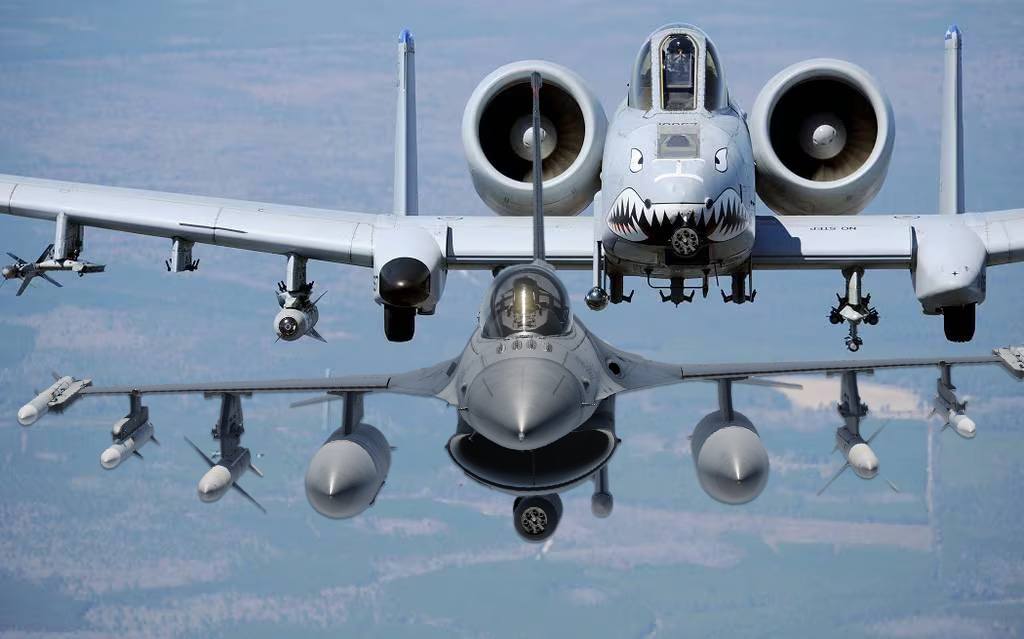
The A-10 Thunderbolt II, better known as the Warthog, is renowned for its massive 30mm GAU-8 Avenger rotary cannon. But for a short time in the twilight of the Cold War, the Air Force wanted to know if it could replace the low-and-slow Warthog by strapping a variant of the same massive gun to the light-and-nimble F-16.
This concept, known initially as the A-16 and later as the F/A-16, would see the broadly capable fighter absorb the A-10’s close air support (CAS) role by delivering a variety of air-to-ground munitions. Most prominent among its weapon systems would be gun pods carried beneath each wing and the aircraft’s center pod. These pods would house a pair of matching 7.62mm miniguns underwing, which were meant to support the primary gun system bolted to the F-16’s belly: a 30mm rotary cannon that fired Red Bull-can-sized depleted uranium projectiles at ground targets at 40 rounds per second.
This combination of the F-16’s speed and agility and the A-10’s incredible firepower, the Air Force hoped, would result in a more survivable close air support platform – one that would be capable of offering the Warthog’s ground-pounding presence without its vulnerability to enemy air defenses.
The idea seemed so promising that a small batch of F-16s were even modified and equipped with a new pod-based variant of the A-10’s mighty cannon and deployed to Iraq for Operation Desert Storm, where a group of pilots from the New York Air National Guard were tasked with determining once and for all whether or not this new F/A-16 concept had wings.
However, within just about 48 hours worth of combat operations, the Air Force came to realize that despite their concerns about how survivable the Warthog may be in contested airspace, not even mounting a 30mm cannon on the F-16 would be enough to bring the A-10 down.
The A-10 has always been living on borrowed time
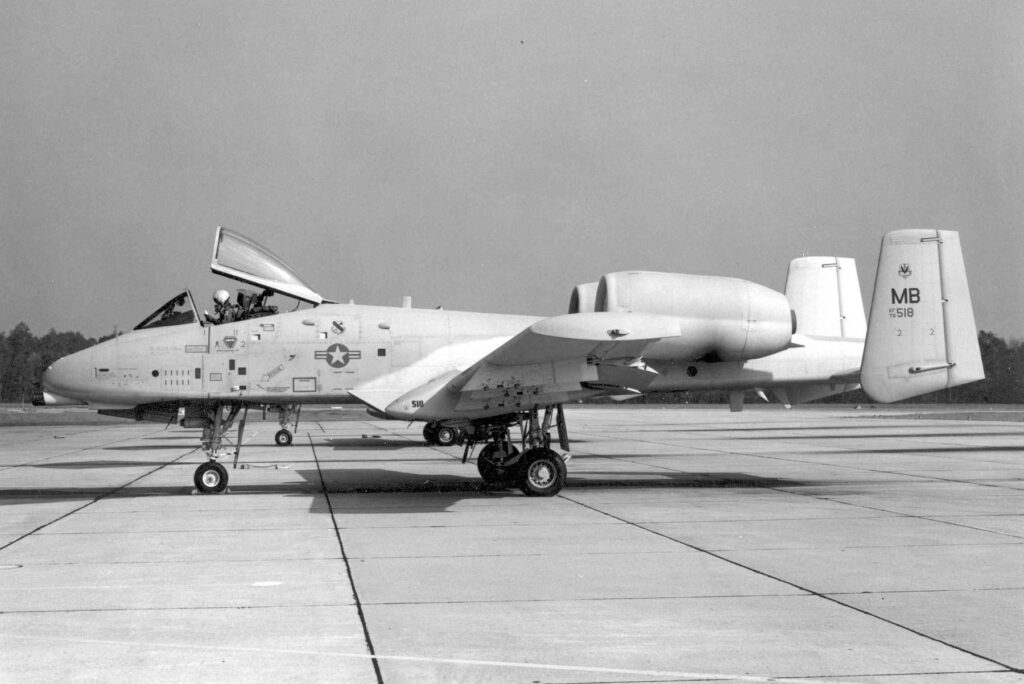
The Warthog’s path to duty arguably began during the Vietnam War, when the United States came to recognize that high-speed, low-loiter time platforms like the F-4 Phantom were ill-suited to fly close air support missions for troops on the ground. As a result, the Air Force turned to its Korean War-era A-1 Skyraider for the job, but with a standard cruising speed of under 200 miles per hour and four 20mm cannons onboard with just 200 rounds per weapon, the aircraft not only lacked the necessary firepower but was also seriously vulnerable to small arms fire.
Yet, while the need for the A-10 may have been first recognized in the Far East, the aircraft’s focus throughout development was decidedly further West – namely, in a lowland corridor on the border between East and West Germany known as the Fulda Gap.
Related: More than missing guns: Why America lost dogfights over Vietnam

This area, some 60 miles northeast of Frankfurt, included several narrow open passes tucked away between rolling German hills making it uniquely suited to allow columns of Soviet armor to pour into Europe if the Cold War suddenly turned hot. With only around 250,000 American troops pre-positioned in Western Germany at the time, and roughly 1.2 million Soviet and Warsaw Pact troops staring them down from the opposing side of the Fulda Gap, NATO planners had no illusions about their chances at successfully stopping such an assault.
“This is the frontier where it would happen,” Col. Thomas E. White, commander of the 4,500 troops in the 11th U.S. Armored Cavalry stationed at the mouth of the Fulda Gap, told the LA Times in 1987.
The pressing need to find a way to curtail an armored Soviet advance in this region certainly informed the selection of the A-10’s primary weapon system – a massive hydraulically driven seven-barrel rotary cannon capable of slinging 30mm armor-piercing rounds with selectable speeds of 2,100 rounds per minute or a mind-blowing 4,200 rounds per minute. At full tilt, this 20-foot monster of a weapon could deposit 70 rounds on target per second, meaning the Warthog could empty its entire standard loadout in just over 16 seconds of sustained fire.
While that might not seem like much, there aren’t many targets on the planet that could withstand a full second of sustained fire from this powerful weapon, making the 1,150-round standard loadout (and 1,174-round maximum loadout) more than enough to have the necessary impact.

With a maximum effective range of 4,000 feet, this weapon came to dictate the A-10’s flight profile. That massive gun, dubbed the GAU-8 Avenger, was mounted along the aircraft’s center line and angled down only slightly, which meant Warthog pilots would need to fly just about directly at their targets on the ground in a shallow 30-degree dive and close to within 4,000 feet to engage them. With what was sure to be a symphony of Soviet air defense weapons firing from below, the A-10 would not be able to avoid being hit, so it was designed specifically to stay flying even after absorbing an immense amount of punishment.
For this reason, the A-10 boasted double-redundant hydraulic flight control systems, as well as a mechanical backup in case both of those systems failed. The cockpit was encased in 1,200 pounds of titanium armor ranging in thickness from 0.5 inches to 1.5 inches – enough to withstand a direct hit from 23mm gunfire and indirect hits from weapons as large as 57mm. Its engines were positioned high atop the aircraft, limiting the chances of debris being sucked into them while operating from austere forward airstrips. Self-sealing fuel tanks with check valve-equipped fuel lines helped ensure any puncture of the fuel system wouldn’t result in the jet going down.
The A-10 was over-engineered to be able to make it home while down an engine, or after losing half the tail or half of one of its wings. The Warthog was meant to be a flying tank, but even with all its baked-in survivability, the Air Force still recognized that the aircraft itself… just wasn’t all that survivable.
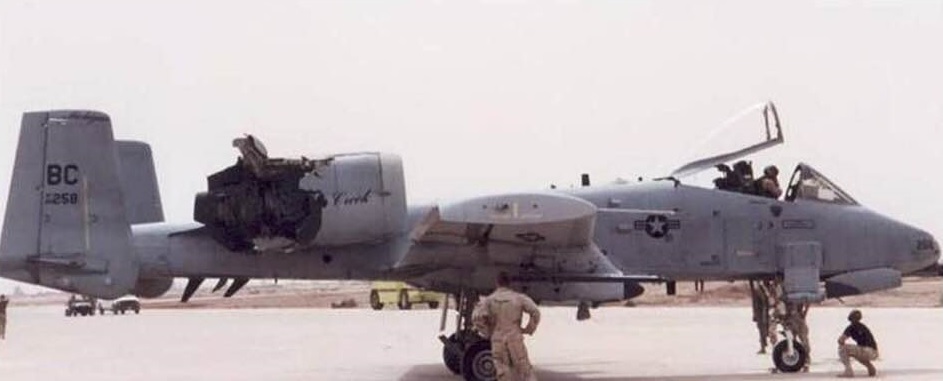
According to a report published by Combat Aircraft magazine, the Air Force still predicted that a war in Europe would result in substantial A-10 losses, as the aircraft were tasked with engaging columns of Soviet armor amid an inverted hail storm of anti-aircraft fire. Estimates projected that in every 100 sorties, the branch could expect to lose roughly seven percent of its deployed A-10s, which was a big problem, seeing as the plan to stifle a Soviet advance through the Fulda Gap called for each pilot to fly roughly four sorties per day for a combined minimum of 250.
As War Is Boring would later point out, a seven percent loss rate flying at that operational tempo would have meant that each of the six A-10 forward operating locations in Europe would lose at least 10 airframes per day. At that rate, America would lose every A-10 in its fleet – roughly 700 jets – in under two weeks.
That is to say that the A-10 Thunderbolt II wasn’t designed to survive in contested airspace but was rather built to last just long enough to inflict heavy losses on invading Soviet forces before being all but inevitably shot down. This concept of operations might sound cynical to our modern ears, but it’s important to understand the stakes of such a conflict between nuclear powers. After all, Warthog pilots wouldn’t be the only ones going out in a blaze of glory if NATO and the Warsaw Pact countries started trading nuclear blows.
Yet, while strapping highly-trained pilots into what could arguably be called heavily armed Kamikaze tank killers may have been seen as an operational necessity at the time, it was very clearly not an optimal solution, and the Air Force started looking for ways to retire its new flying tank almost as soon as it entered service.
Cramming the A-10’s 30mm gun into a pod
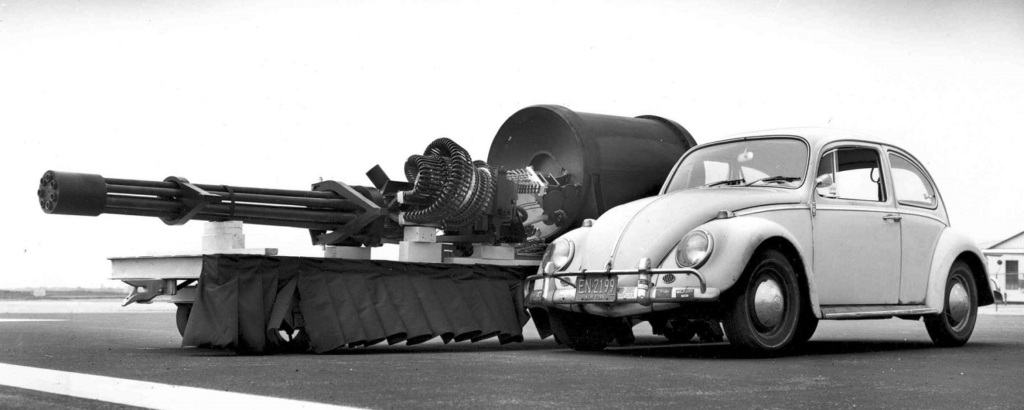
Several efforts at fielding more survivable close-air-support aircraft soon emerged, including a heavily modified iteration of the A-7 Corsair II that would have boasted the same F100 afterburning turbofan as the F-15 Eagle, but none managed to demonstrate the necessary combination of value versus survivability needed to step in and replace the still-new A-10.
So, the Air Force opted for a different approach – looking to aircraft that were already in service and demonstrating the sort of high-speed survivability it was looking for, and then simply trying to strap the A-10’s massive 30mm cannon to them instead.
To accomplish this, the Air Force kicked off a new program dubbed “Pave Claw,” which sought to reduce the size and weight of the Avenger rotary cannon and then stuff it into a gun pod that could be carried by other, more survivable, jets.
The original GAU-8 was so massive that the A-10 had to be designed around it to accommodate all seven of its 7-foot-long barrels, a hearty firing mechanism and feed system, and the ammunition drum that, alone, was nearly six feet long and 34.5 inches in diameter. The gun system itself weighed only around 620 pounds, but when fully loaded with 1,350 rounds of 30×173 mm ammunition, its weight skyrocketed to a hefty 4,029 pounds.
The first order of business, then, was to bring the weight down, so the Air Force started by reducing the number of barrels in its new pod-based 30mm cannon from seven to four. While the A-10’s GAU-8 was powered by a pair of hydraulic motors, each with independent redundant hydraulic systems, the pod-based cannon would use a single pneumatic drive system powered by a 3200psi composite bottle of compressed air.
The biggest source of weight for the GAU-8 was its Coke-bottle-sized 30mm depleted uranian armor-piercing rounds, and there was no way a pod-based variant would be able to carry as much of this ammunition as the A-10.
Nonetheless, a cleverly designed helical magazine that saw the rounds spiral around the gun inside the pod made it possible to carry 353 rounds onboard. With fewer barrels and a different drive system, this new 30mm gun pod could only manage a comparatively measly 2,400 rounds per minute – just over half of the GAU-8’s maximum – but could nonetheless put 40 rounds on target per second. When you account for the half-second it took for the barrels to get to speed, that meant a pilot could burn through every round onboard in under 10 seconds of sustained fire, but in those 10 seconds, this new gun pod could unleash some serious destruction.
This new four-barrel 30mm cannon was dubbed the GAU-13/A. Once complete, it weighed in at just 333 pounds and stretched just over nine feet long, making it roughly half the weight of the GAU-8 at less than half the length. The pod that housed the weapon was entirely self-contained and designed to be mounted on just about any tactical aircraft with standard 30-inch lugs, including the F-15 Eagle (the Strike Eagle wouldn’t emerge until years later). However, the Air Force already had one very specific fighter in mind… the broadly capable and extremely agile F-16 Fighting Falcon.
Turning the F-16 into the A-16
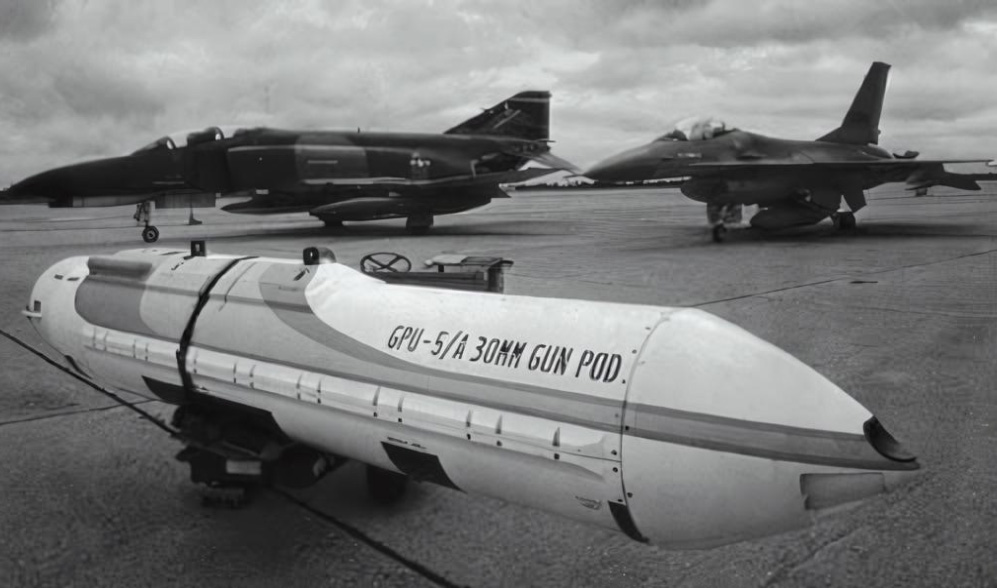
The General Dynamics F-16 Fighting Falcon entered service just one year after the A-10, but from a technological standpoint, it was practically from another era. Meant to serve as a low-cost supplement to the immensely expensive F-15 Eagle, the small and nimble F-16 was the first production fighter ever to incorporate fly-by-wire control, which brought with it a revolution in fighter design that coincided with the advent of John Boyd and Thomas Christie’s Energy–maneuverability theory model of aircraft performance.
The F-16 was the first fighter designed for combat in the truly modern sense, embracing quantitative data over the pervasive belief at the time that air-to-air combat was more artform than science.
Aircraft up until that point had been designed to have what’s commonly known as “positive static stability,” which means the aircraft is shaped in such a way that air flowing over its wings and control surfaces will make it stable by default, forcing the pilot to trade either kinetic energy (speed) or potential energy (altitude) to overcome that inherent stability and perform aerobatic maneuvers. The F-16, on the other hand, was inherently unstable, but used an onboard flight control system to make constant small adjustments to the positioning of its control surfaces to make it seem stable in level flight.
As a result, this new fighter didn’t need to trade nearly as much energy to snap into aggressive aerobatic maneuvers, allowing it to retain as much speed and altitude (energy) as possible. The more energy the aircraft maintains, the more it has to trade for further maneuvers, and the bigger the advantage it has in a dogfight.

Yet, while the F-16 was envisioned as an all-business dogfighter by Boyd and his controversial group of colleagues known as the Fighter Mafia, it wasn’t long before the Air Force came to realize that this nimble new fighter could do a whole lot more than air-to-air combat. The F-16 entered service in 1978 but proved so well suited for ground-attack operations that by 1981, every F-16 to roll off the assembly line came standard with the built-in structural and wiring provisions required to leverage air-to-ground bombs and missiles.
The very next year, production began on the GAU-13/A and its GBU-5 gun pod, which the Air Force believed could turn the air-to-air focused multi-role F-16 into an attack-specific 30mm CAS machine. Before long, the branch began setting F-16 airframes aside for this new role, which came to be known as the A-16, swapping out that F-for-fighter prefix in favor of a new A-for-attack designation.
This new Block 60 A-16 would boast a great deal of onboard firepower, delivered primarily by its massive GAU-13 30mm cannon, but boosted by twin 7.62mm miniguns mounted in their own pods under each wing. Targeting for all this firepower would be bolstered by a new conformally mounted FLIR targeting system dubbed “Falcon Eye;” this was then integrated with the “Cat’s Eye” helmet-mounted targeting sight that was similar, in some respects, to the monocle sighting systems employed by Apache helicopter pilots. These changes, and a slew of others, however, saw the A-16 concept quickly balloon in both price and weight, effectively eliminating two of the F-16’s primary strengths in the Air Force’s eyes.
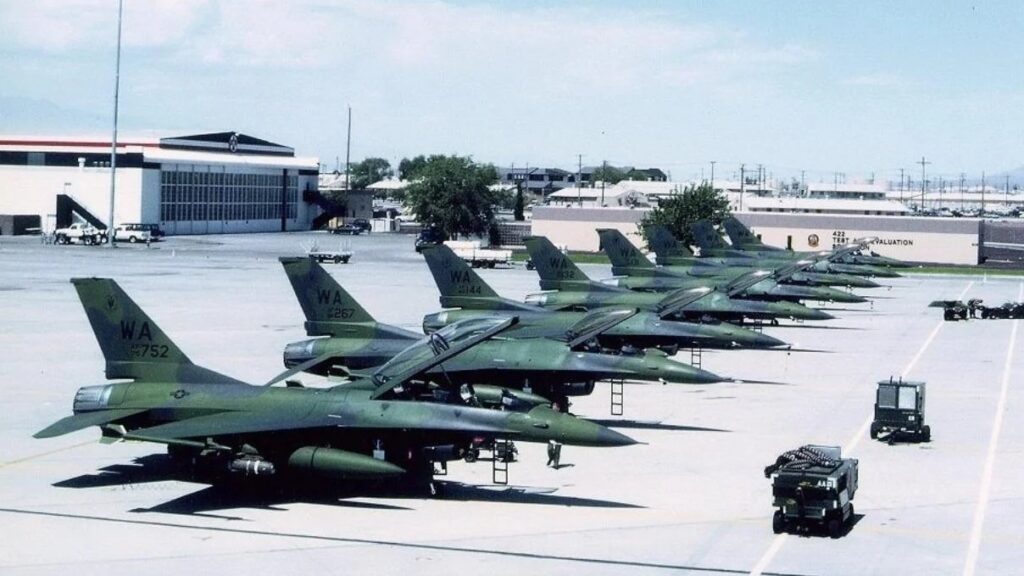
Two existing Block 15 F-16s were modified and converted into the A-16 trim at Shaw Air Force Base for testing, but the effort was curtailed by a lively debate about what kind of aircraft was truly suitable for the CAS mission. Some argued that the A-16, while certainly quick and agile, lacked the rugged toughness required to survive the hornet’s nest of small arms fire such an aircraft would have to contend with, while others made the now familiar claims that the A-10 was simply too slow to survive in modern battlespaces.
Ultimately, however, the argument was made moot in 1990 when the U.S. Air Force was ordered to maintain two wings of A-10s for the CAS mission, effectively killing off the A-16 concept the branch had hoped could serve as a suitable replacement.
Congress forced the Air Force to keep its Warthogs, but the branch wasn’t happy with that and kicked off a sizable retrofit of some 400 F-16s with a slew of new CAS-focused systems, even if the GBU-5 gun pod was not among them.

Then as the Desert Storm air campaign kicked off in the early days of 1991, the Air Force saw its opportunity to demonstrate that the F-16 really could fly and fight using its podded 30mm rotary cannon. A group of 24 F-16As and F-16Bs out of the 174th Tactical Fighter Wing of the New York Air National Guard were equipped with the GBU-5 30mm gun pod and re-designated F/A-16s, combining both fighter and attack prefixes.
These aircraft flew into the fight with the Air Force’s CAS hopes resting on their shoulders, but despite the best efforts of the pilots, the 30mm gun pods just didn’t live up to expectations.

First and foremost, the centerline pylon mount for the nearly 2,000-pound (when fully loaded) gun pod quickly proved insufficient for the job, with the weapons knocking themselves off-center after just a second or two of sustained fire, eliminating the weapon’s zero and making it all but impossible to accurately lay down fire. While that could likely be addressed with just a bit more R&D, the other issues were inherent to the differences between how the F-16 and A-10 were designed to operate.
Although the A-10 flies at a standard cruising speed of around 335 miles per hour while engaging ground targets, the F-16’s cruising speed is usually almost twice that, at just shy of 600 miles per hour. In theory, this added speed would make the F/A-16 a harder target for ground troops, but in practice, it meant the A-16’s pilot had significantly less time to line up a target during their shallow dive toward the earth on a gun run. And of course, when the weapon was firing, it created such immense vibrations within the aircraft that there were palpable concerns about potential damage to onboard electronics.

Within only a day or so of combat operations, F/A-16 crews transitioned to using the 30mm gun pod as an area-effect weapon, effectively giving up on the idea of precise targeting in favor of using its massive rounds more like cluster munitions over a broader area. Within just two days of combat operations, the entire idea was scrapped, the gun pods were removed, and America’s only-ever F/A-16s transitioned back to their conventional bomb-dropping roles.
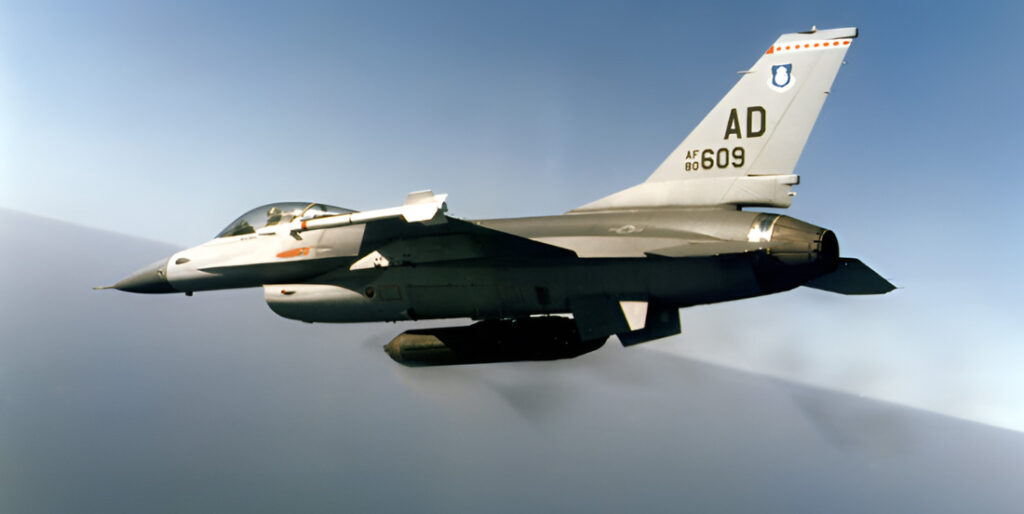
And just like that, the A-10 was given its second of many stays of execution, proving once again that no other platform in the American arsenal could effectively employ the mighty GAU-8 Avenger rotary cannon, and as such absorb the CAS role as the Air Force knew it at the time.
In the years since, the F-16, F-15E Strike Eagle, and even much larger platforms like the B-1B Lancer, have all proven to be CAS experts in their own right, thanks to the widespread adoption of precision-guided munitions that allow these aircraft to engage enemy troops effectively without having to adopt the Warthog’s daredevil flight profile.
The A-10, which was a specialty aircraft built to fly and die in a world-ending conflict over Europe, would go on to become a troop (and fan) favorite throughout the two decades of the Global War on Terror, where American forces fought an asymmetric conflict against adversaries with no air defense capabilities to speak of. This proved once and for all, that if you build an aircraft tough enough, a viable use case will present itself – and on a few rare occasions, it might even be tough enough to secure its place in the pantheon of legendary combat aircraft – a pantheon the A-10 has already been circling at low altitude for years now.
Today, the A-10 is once again staring down the seven-foot barrels of retirement, but thanks to the A-16 and F/A-16 efforts, the branch has no illusions about the need to strap its legendary gun to another jet when it does.
But the GBU-5 gun pod is still around, and you never know what the future might bring.
Read more from Sandboxx News
- ‘Stop That Tank!’ This is how Disney contributed to World War II
- How Delta Force thanked police after a week of urban combat training
- F-35 program is becoming one of the most expensive in military history
- Everything you need to know about America’s struggle to replace its aging ICBM arsenal
- Could paramotors be useful to the US military?
Related Posts
Sandboxx News Merch
-

‘AirPower’ Classic Hoodie
$46.00 – $48.00 Select options This product has multiple variants. The options may be chosen on the product page -

‘Sandboxx News’ Trucker Cap
$27.00 Select options This product has multiple variants. The options may be chosen on the product page -

‘Sandboxx News’ Dad Hat
$27.00 Select options This product has multiple variants. The options may be chosen on the product page

Alex Hollings
Alex Hollings is a writer, dad, and Marine veteran.
Related to: Military History

The A-12 Avenger II would’ve been America’s first real ‘stealth fighter’
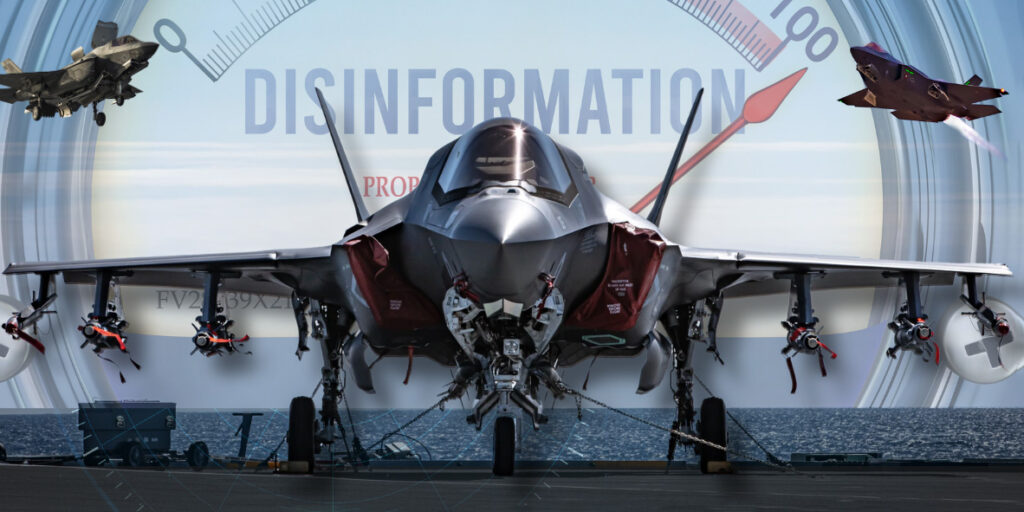
Why media coverage of the F-35 repeatedly misses the mark

It took more than stealth to make the F-117 Nighthawk a combat legend
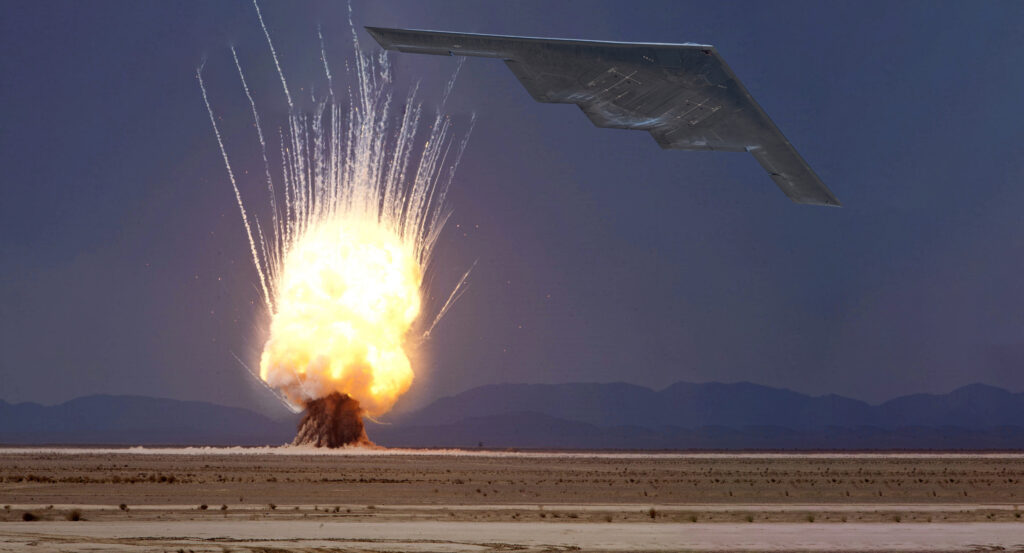
B-2 strikes in Yemen were a 30,000-pound warning to Iran
Sandboxx News
-

‘Sandboxx News’ Trucker Cap
$27.00 Select options This product has multiple variants. The options may be chosen on the product page -

‘AirPower’ Classic Hoodie
$46.00 – $48.00 Select options This product has multiple variants. The options may be chosen on the product page -

‘AirPower’ Golf Rope Hat
$31.00 Select options This product has multiple variants. The options may be chosen on the product page -

‘Sandboxx News’ Dad Hat
$27.00 Select options This product has multiple variants. The options may be chosen on the product page
